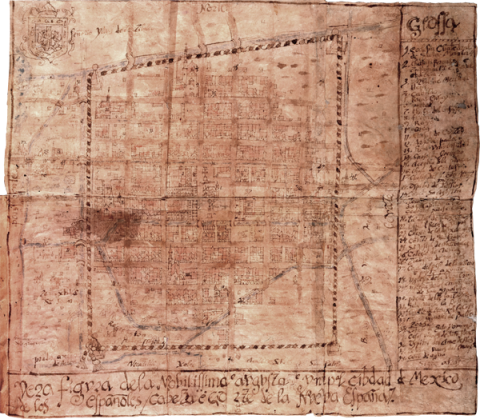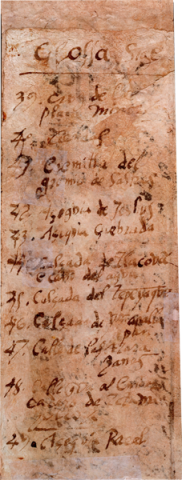This map of Mexico City is a part of what has come to be known as the Codex Cardona, a multiple-legajo "manuscript" that also has boxes of maps. The current (October 2020) location of the manuscript is an auction house in Madrid. Arnold Bauer, Professor Emeritus from the University of California, Davis, wrote a book about the search for information about the "codex." The Cardona purports to be a sixteenth-century record and yet analyses of the ink show it to be 20th-century. Various colonial manuscripts and other sources may have been consulted during its composition, and some educated invention may have entered into it. It imitates relaciones geográficas to a large degree; these were reports to the king about the history, demography, economy, geography, religion, and other features of the colonized indigenous communities of Mexico. The maps of the Cardona and most of the texts have as their content Mexico City and surrounding indigenous communities. Stephanie Wood has published a review of Bauer’s book, where she points to the presence of the Mendoza Moctezuma family in the Cardona manuscript. This was a family active in distributing manuscripts made on amate (native paper) created for indigenous communities in the late 17th and early 18th centuries. Perhaps one or more such manuscripts provided some inspiration for the person composing the Cardona, which was also made on amate (strange for relaciones geográficas), but unlike the Techialoyans, this huge corpus was not written in Nahuatl, but rather a kind of Spanish (or perhaps Romance is a better term), with very unusual orthography. (Brief description by Stephanie Wood; map analysis by Jonathan Truitt.)
México, Plano de la Ciudad de
Principal editor:
Jonathan Truitt











